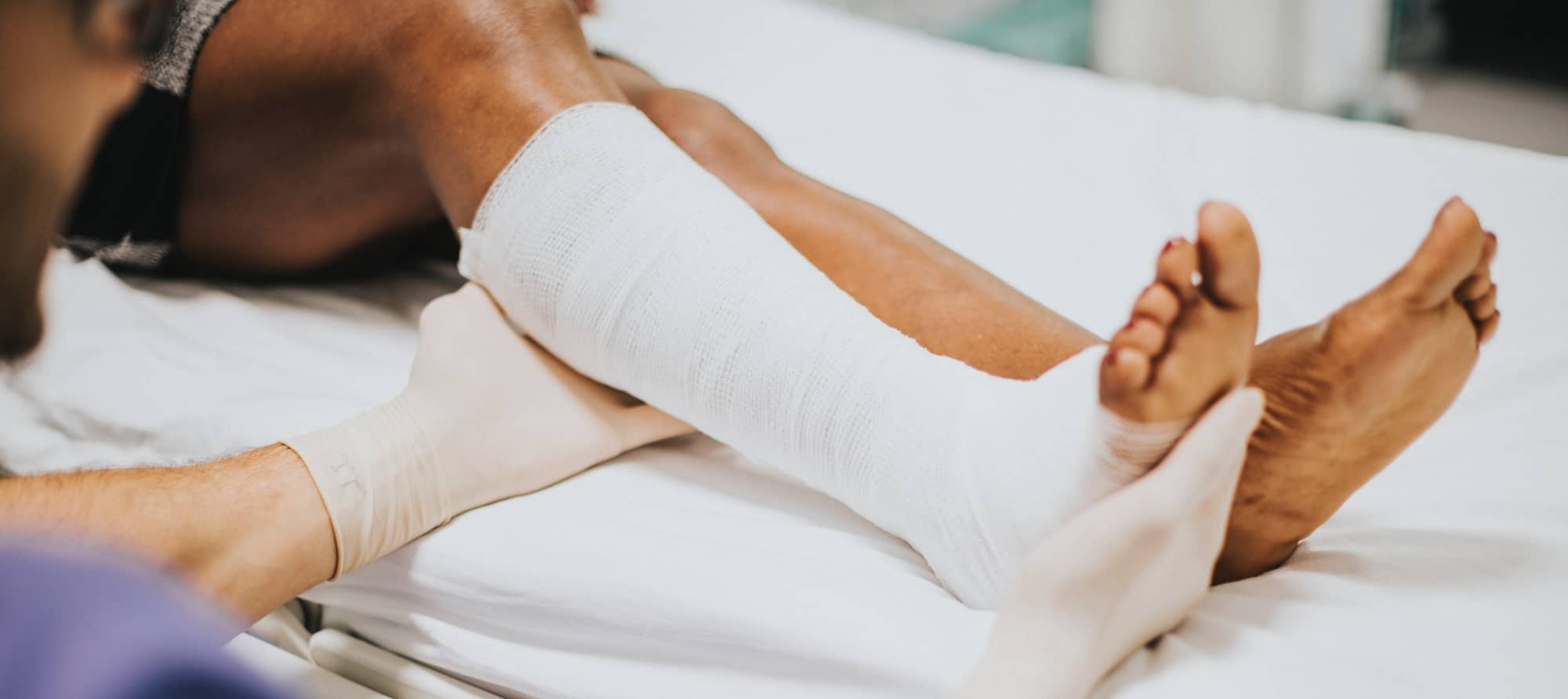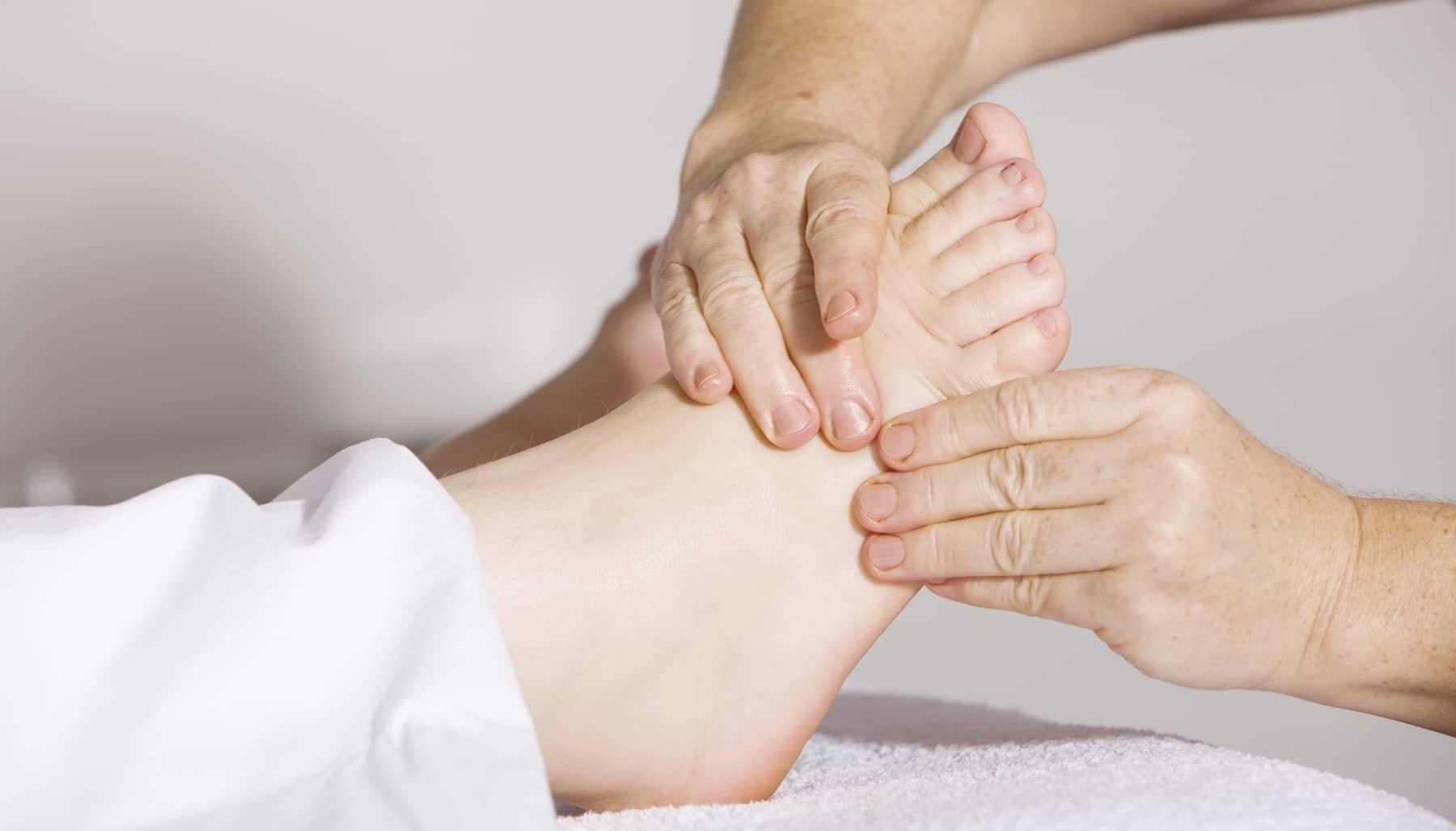Massage Techniques for Acute Ankle Sprains
A sprained ankle is a common sports injury. Everyone who’s graduated from massage therapy school has likely learned about them. There are several different types of ankle sprains. It can be chronic or acute and can range from simple to severe. While there might be treatments that could help, no one should ever attempt massage modalities for an ankle sprain, or any type of injury for that matter. That should only be done by a qualified professional who meets the state’s defined scope and standards of practice for therapy.
Acute Ankle Sprain Massage Technique Video
If you’re a visual learner, we have a short video you can watch to learn about the different techniques a massage therapist might use to treat an acute ankle sprain. Be sure to watch the full video to make sure you didn’t miss any information.
[Additional videos can be found by clicking here]
RICE – No It’s Not Food
 For acute ankle sprains, massage therapy may have benefits. After the injury, the standard treatment for an acute ankle sprain tends to be RICE, or rest, ice, compression, and elevation. It’s always a good idea to respect this as a guideline, as it was developed by professionals.
For acute ankle sprains, massage therapy may have benefits. After the injury, the standard treatment for an acute ankle sprain tends to be RICE, or rest, ice, compression, and elevation. It’s always a good idea to respect this as a guideline, as it was developed by professionals.
During the first 24 to 72 hours, it might be recommended that you avoid touching any injury. In some circumstances (consult with a physician first) there is nothing wrong with a massage therapist laying his or her hands on the injured ankle, depending on your circumstances. This must, however, be done with restraint. The ankle should not be rotated, moved or aggressively touched while it’s still tender. Putting hands on the injured party can have benefits. In some cases, it might help calm the injured person down.
As stated above, no one should deviate too far from the standard RICE guideline. But touching it before or after icing is not necessarily a bad idea. Lightly touching the area might provide relief to the injured person, almost as a kind of placebo effect. The process might even give the massage therapist an idea about the extent of the injury at that moment.
Therapeutic Massage

After about 72 hours, it’s probably fine to progress to a more standard type of therapeutic massage, but this can vary as every circumstance has its own set of unique circumstances. For an inversion sprain caused by a rolled ankle, the ligaments may need to be worked in two positions: plantar and dorsiflexion. During this type of massage, the practitioner palpates the ATFL (Anterior talofibular ligament), CFL (Calcaneofibular ligament) or PTFL (Posterior Talofibular ligament) and applies cross-fiber friction to them. This is done for about 20 seconds in each location and each position.
In some cases, it’s hard for the masseur to know exactly which ligaments are involved or how all three have been affected. Because of this, some practitioners might decide to massage all three. There’s nothing wrong with this as a technique. Some discomfort in the injured ankle might occur, but this process should never be painful. If there is any pain or discomfort the treatment should end right away.
Cross-friction massage may help prevent the formation of scar tissue adhesions and even speed healing. Again, it shouldn’t be done immediately following an injury.
Other massage treatments for acute ankle sprains might include lymphatic drainage. This might be done in addition to applying cross-friction. The cardiovascular system has a pump, the heart, which keeps blood circulating. The lymphatic system doesn’t have a pump. When fluid pools due to an ankle sprain, lymphatic drainage might help. Anecdotal evidence has supported its use, and for now, so does the available research. All of these techniques could be taught in massage therapy school depending on the curriculum.
Looking To Become a Massage Therapist? Test your knowledge with our MBlex practice test.

[Click Here To Take The Mblex Practice Test]
Sources
https://www.mayoclinic.org/diseases-conditions/sprained-ankle/symptoms-causes/syc-20353225
https://www.webmd.com/first-aid/rice-method-injuries
https://www.ncbi.nlm.nih.gov/pubmed/?term=lymphatic+drainage+massage+sprain
*In no way is it recommended that you try to treat injuries by yourself. That should be done by a qualified professional. Before practicing any new modalities or techniques, check with your state’s regulatory authority to ensure they are within the state’s defined scope and standards of practice for therapy. In no way does Fremont University promise or guarantee employment or level of income/wages.

